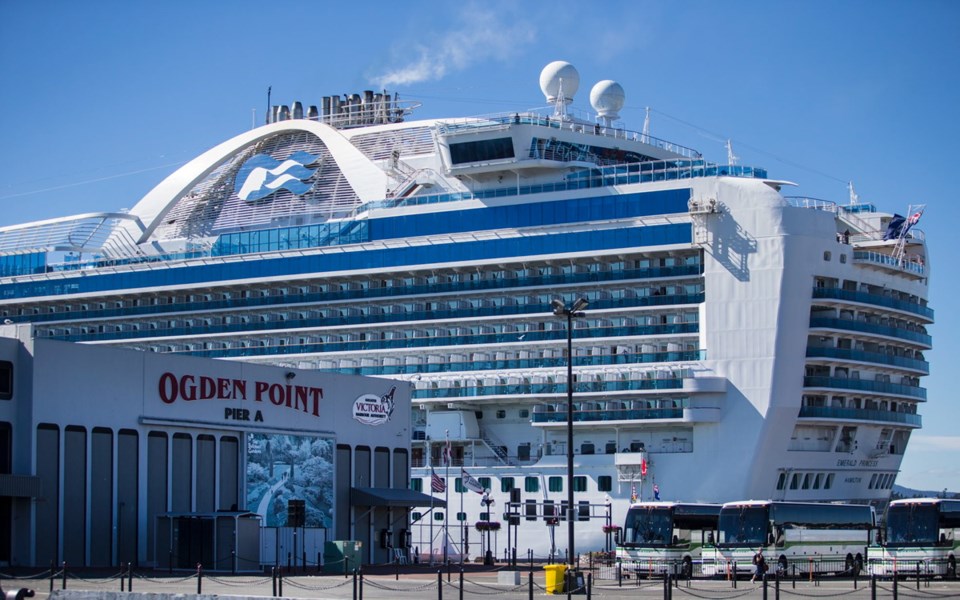On the heels of a new report showing greenhouse-gas emissions at Ogden Point have increased nearly 20 per cent over the past 10 years, the Greater Victoria Harbour Authority has announced it will explore the business case for establishing shore power at the site.
The report, produced by Victoria’s Synergy Enterprises for the harbour authority, concluded that since 2010, greenhouse-gas emissions have increased 19.1 per cent to just over 12,000 tonnes, or the equivalent of 3,241 vehicles on the road per year.
At the same time, contaminants — which contribute to smog, poor air quality and acid rain — including particulate matter, sulphur oxides, nitrogen oxides and carbon monoxide, have been reduced by 41 per cent in the last eight years.
Ian Robertson, chief executive of the harbour authority, said he was pleased to see they had made progress, though they have a long way to go. “Good work has been done, but much more work has to be done to tackle the increase in greenhouse gases, which is why the report makes recommendations around shore power,” he said.
He said in the next three weeks, the harbour authority will be speaking with B.C. Hydro to determine if there is enough electricity supply on the Island to fuel the Victoria Cruise Ship Terminal, then they will work on a business plan and a strategy to find funding.
“While we would love to just flip a switch and supply shore power, the installation of a single plug comes with a series of steps and considerations that range from availability of electricity, cost and funding, and a construction timeline,” he said.
Robertson said this may be the first time there has been a strong business case to be made for shore power, as more cruise ships are staying longer in port, which significantly increases greenhouse-gas emissions.
According to Synergy’s report, the time ships spend in port has almost doubled since 2010. In 2012, a harbour authority study said the cost for one onshore connection would be $13 million. Robertson said the cost is bound to be significantly more.
“The industry is willing to contribute, but I’ve always said it takes industry and government working together to find these solutions and I’m hopeful we would have the city’s support to see if there’s any federal or provincial funding available.”
Robertson said the report was commissioned to establish the facts around particulate matter and emissions and see progress has been made.
He wasn’t surprised to see greenhouse gases increase given that cruise-ship visits increased to 243 in 2018 from 219 in 2010, but he pointed to a 79 per cent reduction in particulate matter and a 95 per cent reduction in sulphur oxides as proof the industry takes the environment seriously.
Marg Gardiner, president of the James Bay Neighbourhood Association, which has been complaining for years about emissions and pollution caused by cruise ships, said there’s nothing new in the Synergy report. “The emissions have been studied to death,” she said, noting they already know sulphur dioxide levels have dropped and greenhouse-gas emissions have increased. “We all know that because they have more and bigger ships coming in. They may burn more efficiently, but we still have more and bigger ships.”
Gardiner said the talk of shore power has become something “of a game” and everyone ought to know the cost will be well north of $15 million.
“The business case may be there now, but it should not be us as taxpayers and local businesses paying to subsidize this multi-billion-dollar industry,” she said.
Jill Doucette, founder of Synergy, said the harbour authority has shown leadership in studying and making public its emission inventory.
“It’s not common practice for marine ports to measure and make publicly available their emissions. By comparison, most airports in Canada do this,” she said. “Our hope is other marine ports will want to do this.”
Doucette said publishing the results will start a conversation and show that the harbour authority is serious about establishing a benchmark to improve performance.



